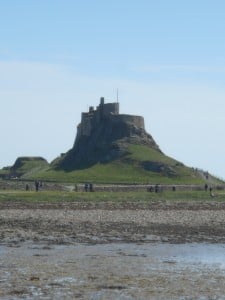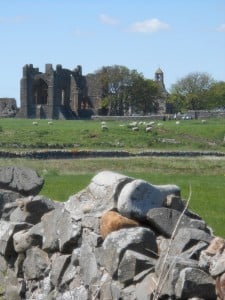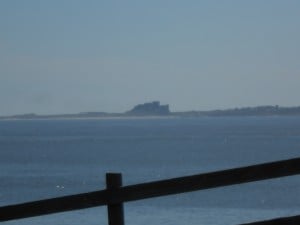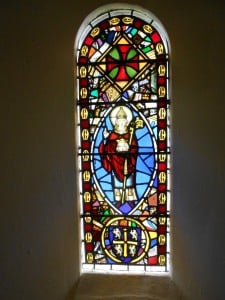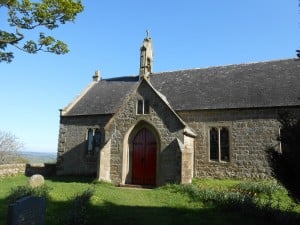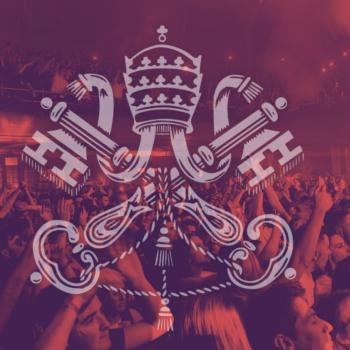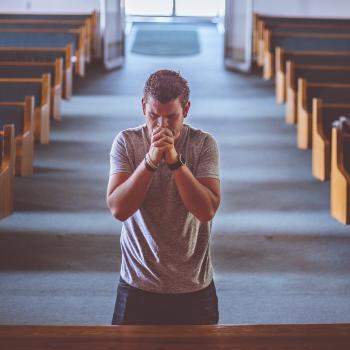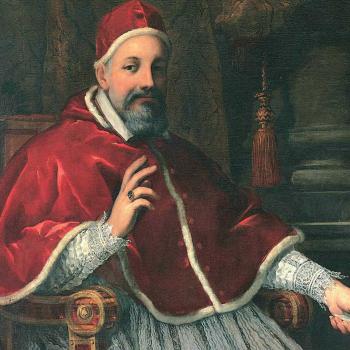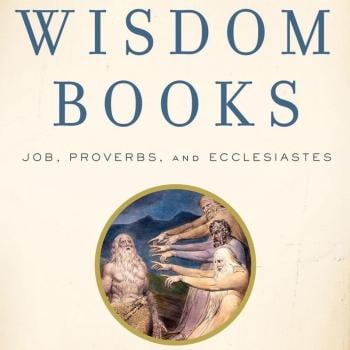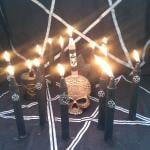Holy Island, also known as Lindsfarne, is a special place. It is one of the places where Christianity first blossomed in England, and became a center of Christian life for a long time. But Holy Island did not provide the protection that castles along the northeast coast of England did (see the last of the pictures above of Bamburgh Castle, just visible in the distance from Lindsfarne). And so when the Viking invasion came in 793, the monks at the priory (see the ruins of the Norman priory in the third picture above) felt some urgency to do something quick in regard to the bones of their patron saint– St. Cuthbert, who had lived on a little island just across from where the castle (see the first two pictures above) now stands (note— the castle at Lindisfarne is not an ancient one, and is in any case too small to withstand a major assault by Norsemen). So it was that St. Cuthbert went walk about, or in this case carry about, finally ending up in Chester le Street near Durham, and then underneath the floor behind the high altar of Durham Cathedral. There is also a statue of St. Cuthbert holding the head of St. Oswald, and it too stands behind the high altar in Durham. Here is one of the old stained glass portraits of St. Cuthbert in the St. Mary the Less Church near Durham Cathedral.
The story however doesn’t just involve the flight from Lindisfarne, and eventual burial under the White Stone Church which in turn was superceded by Durham Cathedral beginning in the late 11th century. It is also a story of a war, and of St. Oswald (whose head was found in the coffin with St. Cuthbert when it was opened many years later). St. Oswald was with the troops and blessed them at what came to be called The Battle of Heavenfield, near Hexham and Corbridge. There is a little chapel commemorating St. Oswald and the victory at this field and the pictures below begin to help you put some of the pieces together.
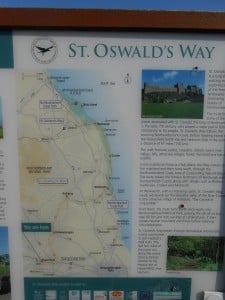
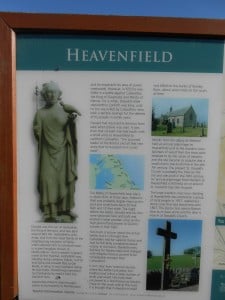
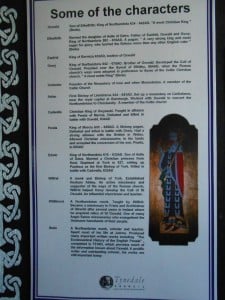
Medieval Christianity involved a lot of fighting, unlike early Christianity. It also involved the reverencing of the dead, including saints bones, and the cult of relics. Yet despite all of this, there was also deep devotion to God in Three Persons, and a profound spiritual life that would put many of us to shame. For me, going back to Holy Island and then working my way back to Durham, was more than just journey, it was a pilgrimage. It reminded me of how fragile and tentative Christian life can be, when under attack. How it needs to be protected and nurtured, like a vulnerable child. But it also reminded me of just how resilient and devoted so many of these medieval Christians were. They persevered through invasions, war, famine, plague in ways that modern Christians in the West can hardly fathom. Theirs was an unconquerable spirit, a spirit that all Christians, regardless of their circumstances, who believe what Paul says in 2 Cor. 4 should have. It’s worth pondering.



